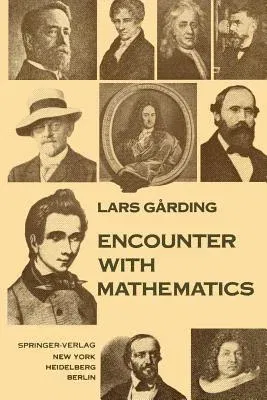Lars Garding
(Author)Encounter with Mathematics (Softcover Reprint of the Original 1st 1977)Paperback - Softcover Reprint of the Original 1st 1977, 14 March 2012

Qty
1
Turbo
Ships in 2 - 3 days
In Stock
Free Delivery
Cash on Delivery
15 Days
Free Returns
Secure Checkout
Print Length
270 pages
Language
English
Publisher
Springer
Date Published
14 Mar 2012
ISBN-10
1461596432
ISBN-13
9781461596431
Description
Product Details
Author:
Book Edition:
Softcover Reprint of the Original 1st 1977
Book Format:
Paperback
Country of Origin:
NL
Date Published:
14 March 2012
Dimensions:
23.39 x
15.6 x
1.52 cm
ISBN-10:
1461596432
ISBN-13:
9781461596431
Language:
English
Location:
New York, NY
Pages:
270
Publisher:
Weight:
399.16 gm

